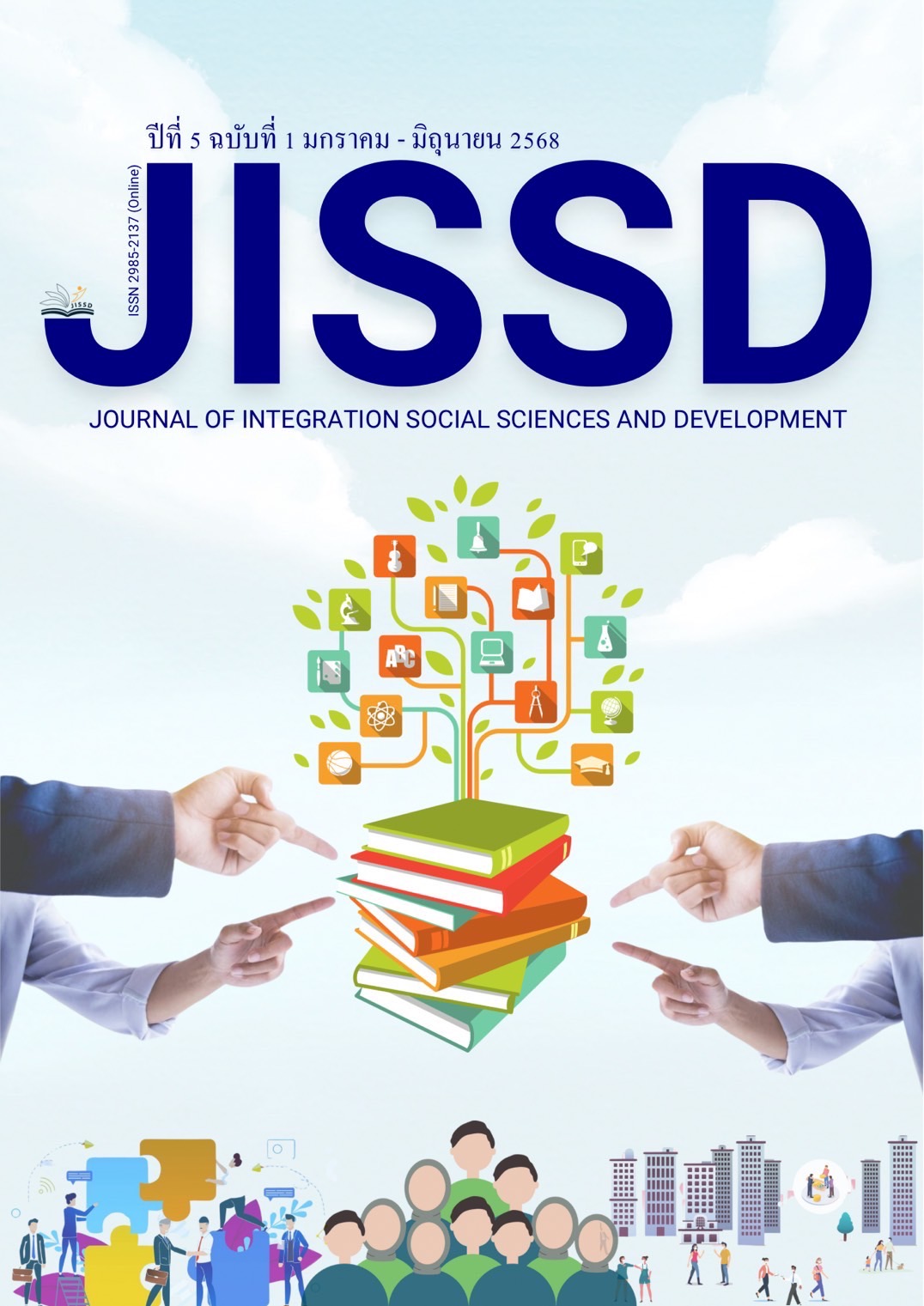Educational management in multicultural society for Ethnic students in the Marginalized areas of Doi Ang Khang Consortium under the Chiang Mai Secondary Educational Service Area Office
Main Article Content
Abstract
This research article aims to study the management of educational administration and the development guidelines for educational management in a multicultural society in the marginalized areas of the Doi Ang Khang school consortium under the Chiang Mai Secondary Educational Service Area Office. The sample group consisted of 205 administrators and teachers, along with 5 key informants for the interviews. The research tools used were a questionnaire, with item IOC values ranging from 0.67 to 1.00, and an overall reliability coefficient of 0.87, and an interview form. The statistical methods used for data analysis were percentage, mean, standard deviation, and content analysis. The results are presented using descriptive methods.
The results show that the educational management in multicultural societies in border areas was at a high level. On a side-by-side basis, it was found that it was at a high level in all aspects as follows: community relations and relevant agencies; administrator leadership in multicultural settings; promotion of teaching management in multicultural contexts; administrator characteristics in multicultural contexts; and school networking in multicultural contexts, respectively.
The development guidelines were that in terms of the relationship with the community and related agencies, wise people, villagers, or local knowledge were invited to educate students. In terms of administrator leadership in a multicultural education context, they should deeply understand the differences in cultures that exist in the community, whether it is traditions, lifestyles, or different beliefs. In terms of promoting teaching management in a multicultural context, they should promote teaching management in a multicultural context by using local wisdom. In terms of administrator characteristics in a multicultural context, they should be able to see and analyze the living conditions of the community and students in all aspects. In terms of building a network of schools in a multicultural context, they should be a mediate between the school and the community.
Article Details
References
ณัฏฐ์ วรรณบุตร. (2551). บทบาทที่คาดหวังและบทบาทที่เป็นจริงในการดําเนินงานความสัมพันธ์ ชุมชนของโรงเรียนบ้านคลองมะขาม สังกัดสำนักงานเขตพื้นที่การศึกษาตราด. งานนิพนธ์การศึกษามหาบัณฑิต สาขาวิชาการบริหารการศึกษา คณะศึกษาศาสตร์ มหาวิทยาลัยบูรพา.
บุญชม ศรีสะอาด. (2560). การวิจัยเบื้องต้น (พิมพ์ครั้งที่ 10). กรุงเทพ: สุวีริยาสาส์น
ปาริชาติ บริเพ็ชร. (2563). การจัดการศึกษาตามแนวพหุวัฒนธรรมของสถานศึกษา สังกัดสานักงาน พื้นที่การศึกษาประถมศึกษากระบี่ อำเภอเมืองกระบี่ จังหวัดกระบี่. วิทยานิพนธ์หลักสูตรปริญญาศึกษาศาสตรมหาบัณฑิต สาขาวิชาศึกษาศาสตร์ มหาวิทยาลัยสุโขทัยธรรมาธิราช.
ฟาตีหม๊ะ แววันจิต. (2561). บทบาทในการจัดการศึกษาเชิงพหุวัฒนธรรมของโรงเรียนมัธยมศึกษาตอนต้นเพื่อการอยู่ร่วมกันอย่างสันติสุขในจังหวัดปัตตานี. วิทยานิพนธ์หลักสูตรปริญญารัฐประศาสนศาสตรมหาบัณฑิต มหาวิทยาลัยสงขลานครินทร์.
ลัดดาวัลย์ เพชรโรจน์ และคณะ. (2562). สถิติสำหรับการวิจัยและเทคนิคการใช้ SPSS. (ฉบับปรับปรุง). กรุงเทพฯ: เจริญดีมั่นคงการพิมพ์.
ศิริชัย กาญจนวาสี. (2544). ทฤษฎีการทดสอบแบบดั้งเดิม. กรุงเทพฯ: จุฬาลงกรณ มหาวิทยาลัย.
สุชาติ ศรีหานารถ. (2565). การพัฒนารูปแบบการบริหารจัดการศึกษาเชิงพหุวัฒนธรรมสำหรับโรงเรียนประถมศึกษาสังกัดสำนักงานเขตพื้นที่การศึกษาประถมศึกษาสมุทรปราการ. วารสารครุศาสตร์ปริทรรศน์, 9(1), 364-374.
Banks, J. A. (2009). Multicultural education: Issues and perspectives. (7th ed.). Wiley.
Taro Yamane. (1973). Statistics: An Introductory Analysis. (3rd Ed). NewYork: Harper and Row Publications.


